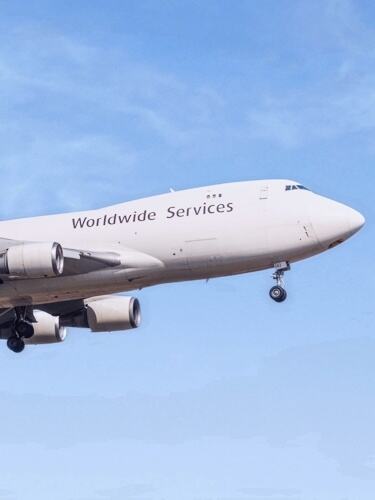Enhancing Global E-commerce with Overseas Warehouses and Efficient Logistics
In today’s rapidly evolving global market, the role of overseas warehouses has become increasingly important for businesses aiming to expand internationally. Integrating overseas warehouses into a well-planned cross-border logistics strategy is crucial for ensuring timely delivery, reducing shipping costs, and improving customer satisfaction. Understanding how these elements work together helps companies stay competitive while managing the complexities of international shipping.
The Function and Benefits of Overseas Warehouses
Overseas warehouses serve as storage facilities located in target markets outside the seller’s home country. They enable businesses to stock inventory closer to end customers, significantly shortening delivery times and minimizing shipping expenses. These warehouses facilitate smoother customs clearance and help avoid complications often associated with direct international shipments.
By strategically placing overseas warehouses, companies can reduce the risk of stockouts and maintain consistent product availability. This proximity to customers not only improves delivery speed but also enhances the overall buying experience, fostering customer loyalty and repeat business.
How Overseas Warehouses Support Cross-Border Logistics Strategy
A robust cross-border logistics strategy relies heavily on the integration of overseas warehouses. These facilities act as vital nodes within the logistics network, bridging the gap between international suppliers and local consumers. They simplify order fulfillment by consolidating shipments and optimizing last-mile delivery.
Incorporating overseas warehouses enables businesses to implement multi-channel distribution approaches, accommodating different sales platforms such as marketplaces, brand websites, and retail stores. This flexibility is essential for addressing diverse market demands while maintaining cost efficiency and operational agility.
Key Considerations When Implementing Cross-Border Logistics Strategy
Choosing Warehouse Locations for Maximum Impact
Selecting the right locations for overseas warehouses is a critical decision within any cross-border logistics strategy. Factors such as proximity to major markets, transportation infrastructure, and local regulations must be carefully evaluated. Warehouses positioned near ports, airports, or logistic hubs can reduce transit times and simplify customs procedures.
Local market knowledge is also essential when deciding on warehouse sites. Understanding regional demand patterns and consumer preferences allows businesses to stock appropriate inventory levels, avoiding overstocking or shortages.
Balancing Inventory Management and Shipping Efficiency
Effective inventory management plays a pivotal role in the success of a cross-border logistics strategy. Businesses must maintain accurate forecasting and demand planning to optimize stock levels across multiple overseas warehouses. This approach minimizes holding costs while ensuring products are available where and when customers need them.
Shipping efficiency can be enhanced by grouping orders and choosing the best delivery routes. Employing advanced logistics software helps coordinate inventory movement and track shipments in real time, improving transparency and responsiveness.
Integrating Technology to Optimize Cross-Border Logistics Strategy
Leveraging Automation and Data Analytics
Technology is a powerful enabler in refining a cross-border logistics strategy. Automation in warehouse operations streamlines processes such as picking, packing, and sorting, reducing human error and accelerating order fulfillment. Implementing warehouse management systems (WMS) provides visibility into stock levels and operational performance.
Data analytics offers insights into shipping trends, customer behavior, and supply chain bottlenecks. These insights allow companies to make informed decisions, adjust strategies dynamically, and continuously improve logistics efficiency.
Enhancing Communication and Collaboration
Seamless communication between stakeholders is vital in a cross-border logistics strategy. Integrated digital platforms facilitate real-time updates among suppliers, warehouse operators, carriers, and sales teams. This connectivity ensures coordinated efforts in managing inventory, shipping schedules, and customer expectations.
Collaborative partnerships with local logistics providers and customs authorities also play a significant role in overcoming cross-border challenges. Such alliances enhance compliance, reduce delays, and build trust within the supply chain network.

Overcoming Challenges in Cross-Border Logistics Strategy
Navigating Customs and Regulatory Complexities
Cross-border logistics faces numerous regulatory hurdles that can disrupt supply chains if not managed proactively. Customs clearance procedures, import/export restrictions, and tax regulations vary across countries, requiring thorough understanding and compliance.
Employing customs brokerage services or working with logistics partners knowledgeable in local regulations helps smooth these processes. Proper documentation and adherence to standards prevent costly delays and penalties, contributing to a reliable cross-border logistics strategy.
Managing Costs and Ensuring Profitability
Cost management remains a central concern in cross-border logistics strategy. Expenses related to warehousing, shipping, customs duties, and handling fees can quickly add up. Businesses must find the right balance between service quality and cost efficiency.
Negotiating favorable contracts with logistics providers, optimizing packaging to reduce dimensional weight, and consolidating shipments are effective cost-saving measures. Leveraging overseas warehouses to minimize express shipping requirements further supports profitability without sacrificing customer satisfaction.
Frequently Asked Questions
How do overseas warehouses improve delivery speed in cross-border logistics?
Overseas warehouses store inventory closer to the customer, reducing shipping distances and transit times. This proximity enables faster order fulfillment and quicker last-mile delivery.
What are the main factors to consider when selecting overseas warehouse locations?
Key factors include access to transportation infrastructure, proximity to target markets, local customs regulations, and understanding regional demand to optimize inventory stocking.
How can technology enhance cross-border logistics strategy?
Technology like warehouse management systems, automation, and data analytics improves inventory accuracy, operational efficiency, and real-time shipment tracking, enabling better decision-making and responsiveness.
What are effective ways to control costs in cross-border logistics?
Cost control can be achieved through negotiating logistics contracts, optimizing packaging, consolidating shipments, and strategically using overseas warehouses to reduce expensive express shipping.

